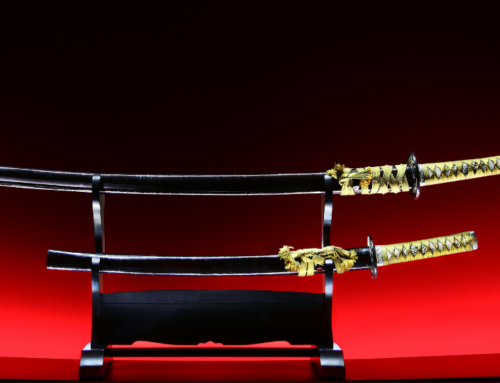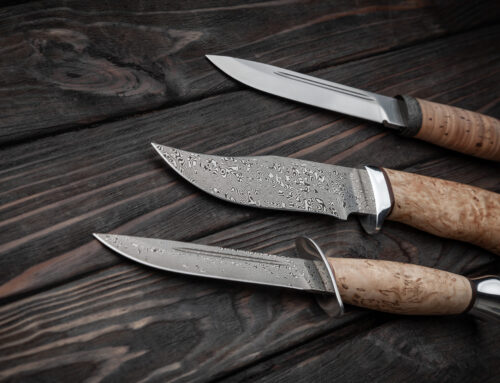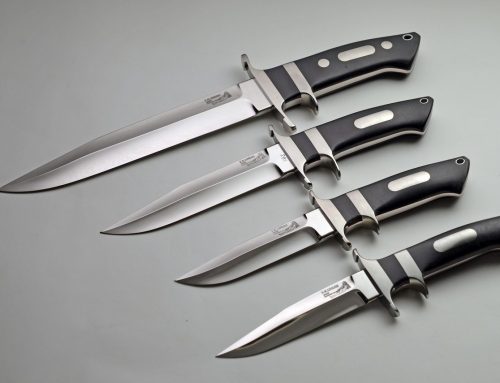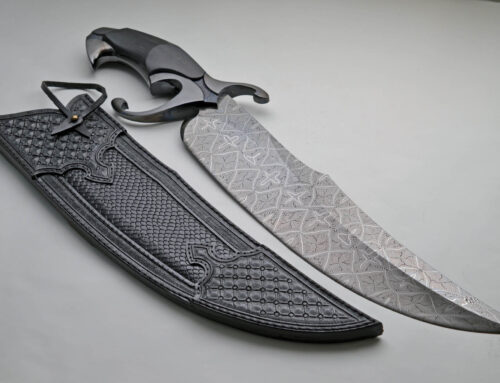Damascus steel is a type of steel characterized by its distinctive wavy surface pattern, often resembling flowing water. The term “Damascus” is historically associated with the city of Damascus, the capital of modern-day Syria, which was renowned for producing high-quality blades and weapons. However, the origins of the true Damascus steel knife were lost to history, and the term is now used more broadly to describe pattern-welded steel.
History of The Damascus Steel Knife
The make of a Damascus Steel Knife has quite a blurry history. Its origins date back to as early as the 3rd century AD. It was produced in the Middle East and gained widespread recognition during the Crusades, as soldiers marveled at its exceptional strength. Damascus steel knife blades gained a reputation and were highly sought after for their durability, cutting ability, and unique patterns.
The exact composition and manufacturing process of traditional Damascus steel remains a mystery. Some historical sources suggest that the steel was made from wootz steel, which was produced in India and imported to Damascus for further processing. This type of steel became unavailable and stopped being mass-produced, which could explain why true Damascus steel stopped being made by the 1800s. The unique patterns may have resulted from the forging and folding techniques used during the blade-making process.
Modern Damascus Steel Knife
Today, the term “Damascus steel” is often used to describe pattern-welded steel, which is a modern attempt to replicate the appearance of true Damascus steel. Modern Damascus steel is typically made by layering and folding different types of steel together to create a billet. The billet is then forged and etched to bring out the characteristic patterns.
It’s important to note that modern Damascus steel technically is not “Damascus”, but is widely accepted to describe this type of method. Modern Damascus steel products may vary significantly in terms of quality and authenticity. Some knives labeled as “Damascus steel” are made using high-quality materials and skilled craftsmanship, while others may be mass-produced using inferior materials and techniques. At Exquisite Knives, you can discover a selection of high-quality modern Damascus blades made by reputable knifemakers, such as the “Goblin” Folder from Jim Schmidt.
Modern vs. Historical Damascus Steel Knives
Manufacturing Process
The manufacturing process of historical Damascus steel remains a subject of debate and mystery. It involved the use of a combination of wootz steel, which was imported from India, and a unique forging and heat-treating process.
Modern-day Damascus steel often refers to pattern-welded steel. This is made through the layering and folding of different types of steel, creating visually attractive patterns on the surface. Unlike historical Damascus steel, modern versions are widely available and produced by skilled artisans around the world. The techniques used to create these patterns are better understood, and the materials are more varied.
Materials
In historical Damascus, Wootz steel contained carbide-forming elements contributing to its unique properties. Damascus steel made today is produced using a variety of modern steel alloys, allowing for greater flexibility in terms of strength, hardness, and other mechanical properties.
Damascus Steel at Exquisite Knives
While true Damascus steel’s historical production techniques remain unknown, modern Damascus steel knives still capture the essence of the ancient blades in terms of appearance and craftsmanship. Get some of the most high-quality modern Damascus steel blades at Exquisite Knives. Please give us a call before ordering at 760-310-4078 to make sure your product is still available.
December 27, 2023





